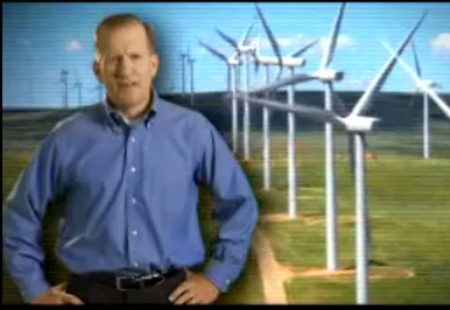 Who will lead the global race for the clean energy future?Photo courtesy of the U.S. Coast Guard via flickrThe race for the clean energy future comes to Washington, D.C. today — only symbolically if the U.S. doesn’t seize the moment. Energy ministers from 20 countries that account for over 80 percent of the world’s global warming pollution are in the U.S. to discuss how to speed up the deployment of clean energy throughout the world, as a part of the Clean Energy Ministerial. The subplot of the meeting will be which of these countries will come out sprinting and which ones will begin by jogging in the race for the clean energy future.
Who will lead the global race for the clean energy future?Photo courtesy of the U.S. Coast Guard via flickrThe race for the clean energy future comes to Washington, D.C. today — only symbolically if the U.S. doesn’t seize the moment. Energy ministers from 20 countries that account for over 80 percent of the world’s global warming pollution are in the U.S. to discuss how to speed up the deployment of clean energy throughout the world, as a part of the Clean Energy Ministerial. The subplot of the meeting will be which of these countries will come out sprinting and which ones will begin by jogging in the race for the clean energy future.
The meeting hosted by the U.S. Secretary of Energy Steven Chu will include energy ministers from Australia, Brazil, Canada, China, Denmark, the European Union, Finland, France, Germany, India, Italy, Japan, South Korea, Mexico, Norway, Russia, South Africa, Spain, Sweden, United Arab Emirates, and the United Kingdom. This is the first time that energy ministers from these key countries have focused solely on clean energy — when they typically meet, they have oil, coal, and other energy sources also on their agenda. I hope they are as ambitious as this letter from leading groups emphasizes.
The race for the clean energy future is on
The clean energy future will be a $13 trillion market over the next two decades. The countries that enter the race by sprinting will tap into this growing demand for the technologies, industries, and the jobs of this century. Those countries that don’t join the race or only tentatively enter (start out jogging) will be left in the dust or will come up short. In fact, just last year alone $162 billion was invested in clean energy.
China is in the race and leading
Last year, China overtook the U.S. in clean energy investment — with $34.6 billion compared to the U.S. at $18.6 billion. Looking at some of the trends in key clean energy technologies such as wind and solar provides some concrete examples of China’s surge. China’s top three domestic wind manufacturers doubled their global market share from about 12 percent to almost 23 percent from 2008 to 2009. In 2009, fifty percent of solar PV cells produced in the world came from China and Taiwan.
India is also in the race
In 2009, India invested $2.3 billion in clean energy — growing at over 72 percent over the last five years. While India has consistently been one of the top countries for wind installations, it is also now embarking on a significant effort to deploy solar.
U.S. jogging?
While the U.S. was second in clean energy investment last year, it lost its top slot to China. And if the European Union is considered as a whole, the U.S. would be in third place. The U.S. played a leading role in early stages of developing many of the clean energy technologies that are dominating the market today, yet on a number of fronts, the U.S. is lagging. Sometime over the next three weeks, the U.S. Senate will debate (and hopefully vote to pass) a climate and energy bill which will send a concrete signal that the U.S. wants to be sprinting in the clean energy race.
So the energy ministers from these 20 countries meet with this backdrop in mind — a race for the clean energy future is happening as we speak and some are full of energy and others are unsure where they want to go. These key countries will be making critical choices in the coming years: Will they embrace clean energy or will they choose to sit on the sidelines?
It is time for the U.S. to get off the bench and invest in a clean energy future.



